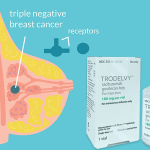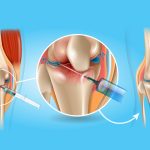Overview of DIRA:
Deficiency of interleukin-1 receptor antagonist (DIRA) is a serious condition discovered in 2009 where the body lacks a protein called interleukin-1 receptor antagonist (IL-1Ra). This leads to dangerous inflammation all over the body, affecting the skin and bones. It’s caused by a problem in genes that are passed down from parents, where both copies of a gene need to have a mutation for the disease to happen.
DIRA is an extremely rare disease, with less than 50 people having it worldwide. It’s been found in families from different places like Puerto Rico, Canada, The Netherlands, Palestine/Lebanon, Germany, Turkey, India, and Brazil. In Puerto Rico, in some areas, about 1 in every 6300 babies might have DIRA. It’s hard to know for sure, but about 30% of babies with DIRA might not make it through their first year.
Clinical Features of DIRA:
DIRA starts when babies are born or just a few days old. They have noticeable skin and bone problems right from the start. Some distinctive clinical features of DIRA include:
- fetal distress
- mouth lesions
- joint swelling
- painful movement
- liver and spleen enlargement
- sore eyes
- rashes that may resemble psoriasis
Kids with DIRA feel really bad pain all the time. This pain can make it hard for them to eat and grow properly. If not treated, the disease can get serious, causing dangerous inflammation, with the establishment of systemic inflammatory response syndrome, multiorgan failure, and death in the early days of childhood.
Treatment and Management of DIRA:
Children with DIRA can be effectively treated with a medicine called anakinra (Kineret). It’s a special kind of medicine that helps replace a missing protein in their bodies known as an interleukin-1 receptor antagonist. Daily subcutaneous administration of anakinra helps replace the missing protein, especially in kids with specific gene changes, and it works really well.
The initial dose of anakinra is 1 mg/kg daily and can be increased by 0.5 mg/kg/day until response is achieved. After stopping anakinra treatment, symptoms and signs can come back quickly within 36 hours. So, treatment might need to continue for life. Anakinra can cause common reactions like redness, itching, and swelling at the injection site, but most people tolerate it well otherwise. We don’t have long-term follow-up information yet.
Reference:
https://www.kineretrx.com/dira
https://www.ncbi.nlm.nih.gov/pmc/articles/PMC8420971/
https://www.sciencedirect.com/topics/biochemistry-genetics-and-molecular-biology/interleukin-1-receptor-antagonist






